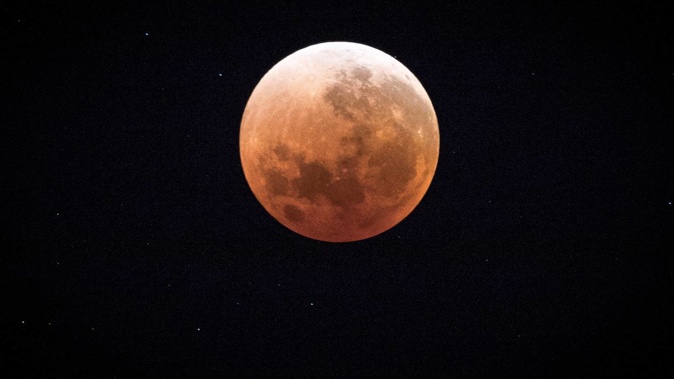
Stargazers will be treated to a "blood micro-moon" this Friday night – and the longest partial lunar eclipse fully visible from New Zealand in more than 800 years.
On the night of November 19, the moon's face will be 97 per cent covered by the deepest part of the Earth's shadow, turning the lunar surface briefly red.
The near-total eclipse will take place over three hours and 28 minutes in our night sky - making it the longest partial lunar eclipse in Aotearoa since the year 1212.
"This partial lunar eclipse is unusually long because it's near total and it's near apogee, which means the moon is furthest from Earth in its orbit, which is known as a micromoon," Stardome's astronomer Rob Davison said.
"So the moon travels close to the centre of Earth's shadow and will stay there for longer than average.
"Most of the eclipse will be dominated by the shadow moving across the moon, with a brief period where it will appear as a blood micromoon in our night sky."
Weather permitting, sky gazers will see the near-total eclipse begin very soon after moonrise around 8pm.
They'll then see Earth's shadow gradually cover the surface of the moon as it rises higher in the sky.
The red colour will be visible once the vast majority of the surface is in shadow, which will peak just after 10pm.
The shadow will then gradually recede until the partial phase ends shortly before midnight.
Davison said the moon will also be only a few degrees away from Matariki in the sky, and they will rise at a very similar time.
Astronomer Dr Grant Christie said this event followed a "blood supermoon" in May, when the Earth lined up between the moon and the sun, while also at its closest point in its orbit around Earth - making it appear much larger than usual.
"This is sort an opposite one. It's the exactly the same situation – only the moon is passing through the shadow on the other side," he said.
"The best total eclipses are of course when the moon goes through the middle of the shadow – but it'll still be pretty interesting to watch."
Christie said while this blood moon wouldn't be as high in the sky as it was during May's event, the experience would be similar.
Take your Radio, Podcasts and Music with you









